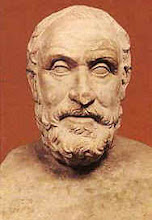 When we think about coal, we think about the bygone era when the sooty stuff was burned to heat our homes. We think of the first Industrial Revolution, of industrialists in top hats surveying strip mines. In other words: coal, in our minds, is not “modern”—it is a symbol of our past. But in reality, this is a myth. Big Coal is alive and well in the US, and it is even more powerful than Big Oil. Today, I would like to deconstruct our incorrect notions about coal, and explain why it plays far too big a part in the US’s energy future.
When we think about coal, we think about the bygone era when the sooty stuff was burned to heat our homes. We think of the first Industrial Revolution, of industrialists in top hats surveying strip mines. In other words: coal, in our minds, is not “modern”—it is a symbol of our past. But in reality, this is a myth. Big Coal is alive and well in the US, and it is even more powerful than Big Oil. Today, I would like to deconstruct our incorrect notions about coal, and explain why it plays far too big a part in the US’s energy future.First, the raw facts: Coal generates 52.1% of electricity in the US. The US currently possesses 1,374 coal mines. In 2007 1,145,600,000 tons of coal were mined. Over 80,000 Americans are employed in the coal mining industry, and many times that number of people live near coal mines. More importantly: coal is not going anywhere anytime soon. US coal reserves stand at about 275 billion tons, which is more than any other nation in the world possesses. The EIA predicts that coal production will increase by 1.1 percent until at least 2030. Likewise, the amount of electricity produced by coal will increase.
Why is this a problem? Coal mining is dangerous, coal itself is a pollutant, and coal burning releases a variety of toxic gases into the air. Coal mining is one of the most dangerous industries in the US, resulting in a number of fatalities each year. Even worse, coal mines are a major source of pollution. Acid mine drainage and fine particulates are harmful to human health and the environment, and blasting mines ruins whole tracts of land. When coal is transported, it releases fine particulates that are hazardous to human heath. And when coal is burned, it gives off CO2, SO2 and other hazardous contaminants. Fortunately technologies such as CCS and IGCC are making coal-burning power plants cleaner by filtering out CO2 and other pollutants. But overall the phrase “clean coal” is a myth because the whole process from start to finish is extremely dirty and dangerous.

So, how do we break away from this dirty energy source? The answer is alternative energy. So far, the US is lacking in terms of clean energy—today renewables only power 1% of our electricity. The other problem with alternative energy sources is that they require electricity to produce, and as I explained above most of this electricity comes from coal. But since many alternative energy sources achieve energy “payback” very quickly (10 to 22 months for photovoltaics!) they can more than make up for the coal used to create them. So if global warming, peak oil, and threats to national security weren’t already enough reasons for the US to pursue energy independence through alternative energy sources, coal certainly is. The sooner we act on this one, the better. I sincerely hope Obama realizes the seriousness of this problem and corrects it by supplanting coal with better, cleaner energy sources.

3 comments:
Very true, we all criticize excessive oil use and dependancy but we seem to forget all about coal. It has the reputation of being an antiquated source of energy from the 20th Century, but it's still widely used today. We seriously need to up the ante with energy efficiency and alternative energy sources if we want to avoid an energy crisis this century.
Agreed. On a more specific note, electric cars are not clean. I'm not sure why more people do not realize this. Coal, a nonrenewable resource, must be burned for the cars to go. The public is blind.
Yes, hybrids and electric cars use dirty electricity from coal. The same goes for hydrogen cars, since hydrogen is not actually a fuel; it's more like a battery that needs electricity to create. We do need to substantially increase our alternative energy.
Post a Comment